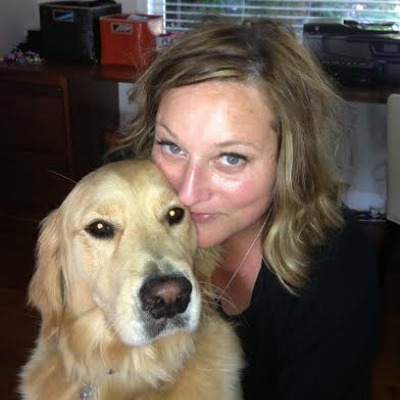No doubt this pattern is familiar to many: starting a new year with high hopes and plans for big changes, then getting bogged down by challenges and the day-to-day stress of life, and eventually returning to familiar habits—including addiction. Here, Joy Hilliker (MA in Counseling Psychology, 2016), a psychotherapist practicing in Seattle, writes about our perceptions of and responses to that cycle of addiction. Pulling from her research and therapeutic work, Joy argues that criminalization and stigmatization will not disrupt addictive patterns, but rather a caring, affirming gaze that does not turn away in disgust.
Addiction is a controversial subject within the community of healers. I am going to speak to it from my own experience watching addiction and being a psychotherapist to those struggling with either substance abuse or in the full throes of addiction. These are my opinions and ways in which I lead my work and practice around this subject. While I don’t claim to be a chemical dependency counselor, I have done a great deal of research out of a sheer need to understand my patients and the enormous and unbearable shame that surrounds this topic due to social stigmatization. What I will caveat within the below words with clear authority is I would never put a client at risk due to my denial of the gravity of their addiction, nor would I be able to provide therapy to anyone so out of their mind that they are not safe or able to make sense of our work.
A mentor of mine who has been in the field for 40 years, whom I respect deeply, said that they would never treat a patient who is in a current state of addiction or substance abuse. I bristled at this statement. It didn’t resonate with me, and I felt that viscerally. I thought, if we won’t see patients while either abusing substances or fully addicted, where will they go? Yes, I understand, there are an abundance of rehab and detox facilities, treatment centers that are so dialed up they are like an extended spa getaway, as well as various sobriety models like Refuge Recovery, Alcoholics Anonymous (AA), and others. Toward those for whom these have worked, I have zero judgement regarding method choice. Sobriety is no small feat, and I have the deepest respect for anyone that has had to war against this demon. But it is not the moral failure that American culture has produced as a narrative—there is big money in the criminalization of addiction/abuse.
Because this is my bent, I bristled in response to my mentor’s statement. It felt like quite a jump to say I will not treat anyone unless their faculties are operating with pure clarity. Immediate questions arose in my mind: Why wouldn’t mirror neurons still be transmitted between patient and therapist during session even if the patient is using? How can we know what is being transmitted subconsciously during session that is of benefit? Who will be the healer that will care for a person so ashamed of needing to numb that they are not ready to have their world know? Isn’t it adding to the criminalization of addiction to refuse therapeutic treatment to those in desperate need of an affirming gaze—no matter their current condition? A person with PTSD does not always have the ability to regulate their circuitry, making their ability to regulate emotions and moods, and to maintain pure clarity, challenging at best. Is one a choice and the other a victim of trauma (PTSD)? Isn’t addiction a response to trauma as well?
My hesitance to accept this statement was due to my experience in treating those with whom I have worked as they are either maintaining sobriety, heavily abusing substances, or fully addicted. In short, one of my clients prior to finding me rehabbed at the famous Meadows Treatment Center. The treatment center felt medical, diagnostic, and profoundly debasing to their dignity, and in turn the client developed PTSD from the treatment center experience itself. All my client needed was to be seen unfixed, human, lonely, and honest about their weariness of pretending to feel okay. Their dignity needed reinforcement by a face mirroring back the message they were good and worthy, and reminding them that to reach out for love and support is a human need. Rugged American individualism has done a number on us all. We worked together for two years getting over the PTSD of being treated as a sick person lacking morality, rather than as just a human who struggles as we all do but never feels allowed to show that outwardly. This client maintains their sobriety via AA—not so much for its methodology, but for the faces looking back in their direction affirming their worth.
“To reach out for love and support is a human need. Rugged American individualism has done a number on us all.”
Another example is of a business executive that was heavily abusing multiple substances—numbing enough in order to get by, maintain a large title and big life, and feel free from the noise and chaos of their world. This client was on the edge, not needing detox but heavily abusing. It was an important step in their healing for me to see them in an altered state and not look away in disgust or judgement; within the full context of the person’s narrative, any one of us would have chosen to numb. This person maintains sobriety through meditation and therapy.
My most extreme addiction treatment was for a doctor living on alcohol. They needed it to sleep and as soon as they woke up. This person had their license suspended and attended a treatment center specifically for doctors and nurses dealing with addiction. This client also felt dehumanized, like a failure, diagnosed, assigned medicine, all while sleeping alone in a room. Another post-treatment center PTSD case. When the client found me, it was clear to me they needed to be seen with their dignity intact, reminded of their worth, treated separately from their struggle with substance, and reminded of their agency and power that had been taken by a narcissistic spouse. Are you hearing the repeated pattern?
Know that I am not advocating against treatment centers, AA, or any methodology. Various methods work for various people. What I am overtly stating is that humans need to be treated as humans, as agents with purpose and something to offer this world. Addiction is not a moral failure, not something to be criminalized, stigmatized, or judged. Those who have struggled in this way are some of our most sensitive souls, sometimes having worried so much about the concerns and wellbeing of others that they forgot about themselves in the meantime.
Interestingly, in 2001, Portugal decriminalized the use of all drugs. It continues as the leading country in highest addiction recovery rate and least number of overdoses. The government chose to see people as human and funnel the funds used to criminalize users into building centers where people desirous of numbing would come to meet face to face (mirror neuron exchange), to feel human, seen, recognized, playful, reminded of their personhood, reminded it’s OK to have needs and aspects of our personality that we don’t have all together. This is what it is to be human.
Another famous study, called Rat Park, was done in the 1970s by a professor of psychology in Vancouver named Bruce Alexander. The study was set up to supply one group of rats with everything a rat would want: tunnels, grass, play toys, friends, and two bottles of water—one was straight water, one was laced with heroin. Because the rats did not know the difference in water, they started going to each bottle equally. The happy rats stopped going to the heroin-laced water because they didn’t want or need it; they had good lives and were content. The rats without the great lives, lonely and bored, repeatedly went to the water laced with heroin. Those rats, the ones that lived on heroin water, all died. This study was done just prior to the veterans returning home from Vietnam, 25 percent of whom had become addicted to heroin due to the horrific experiences they had endured. North American leaders worried as to how they would deal with this epidemic of addicts returning. As it turned out, 95 percent of those who returned home did not need rehab or detox. They were simply content to return to stable, calm homes where they were known.
Here is insight that goes much deeper than the need to understand those who struggle with addiction, or the age-old chicken and egg question of what came first, genetics or environment. Professor Peter Cohen argues that human beings have a deep need to bond and form connections. It’s how we stay sane and receive pleasure and contentment. If we are not able to connect honestly (insides matching outward portrayal) with one other, we will connect with the nearest and next best thing: drugs, food, consumerism, image construction, shopping, ravaging our planet, the list is endless. Maybe we can change the dialogue from addiction to bonding. As in, a person bonded with alcohol because they couldn’t bond fully with anything else. And perhaps this person learned from the world they inhabited, or their family of origin, “We don’t air our dirty laundry out,” “We pull ourselves up by the bootstraps,” “We are good and do things for ourselves.” This rigid mind is what breeds shame, family secrets, and a setting in which hiding reality is the norm.
The opposite of addiction is not sobriety. It’s human connection.


